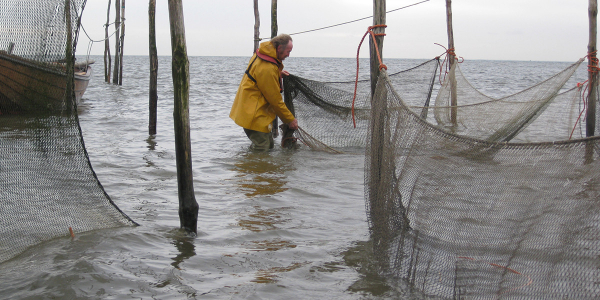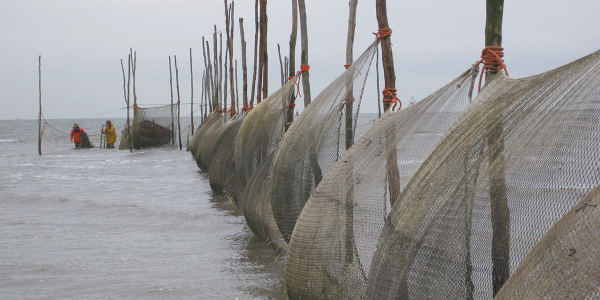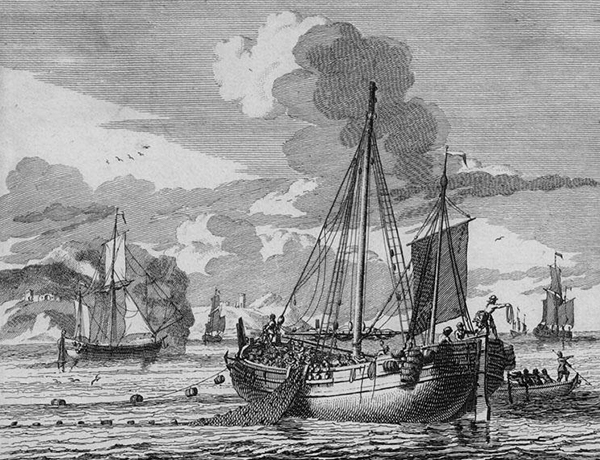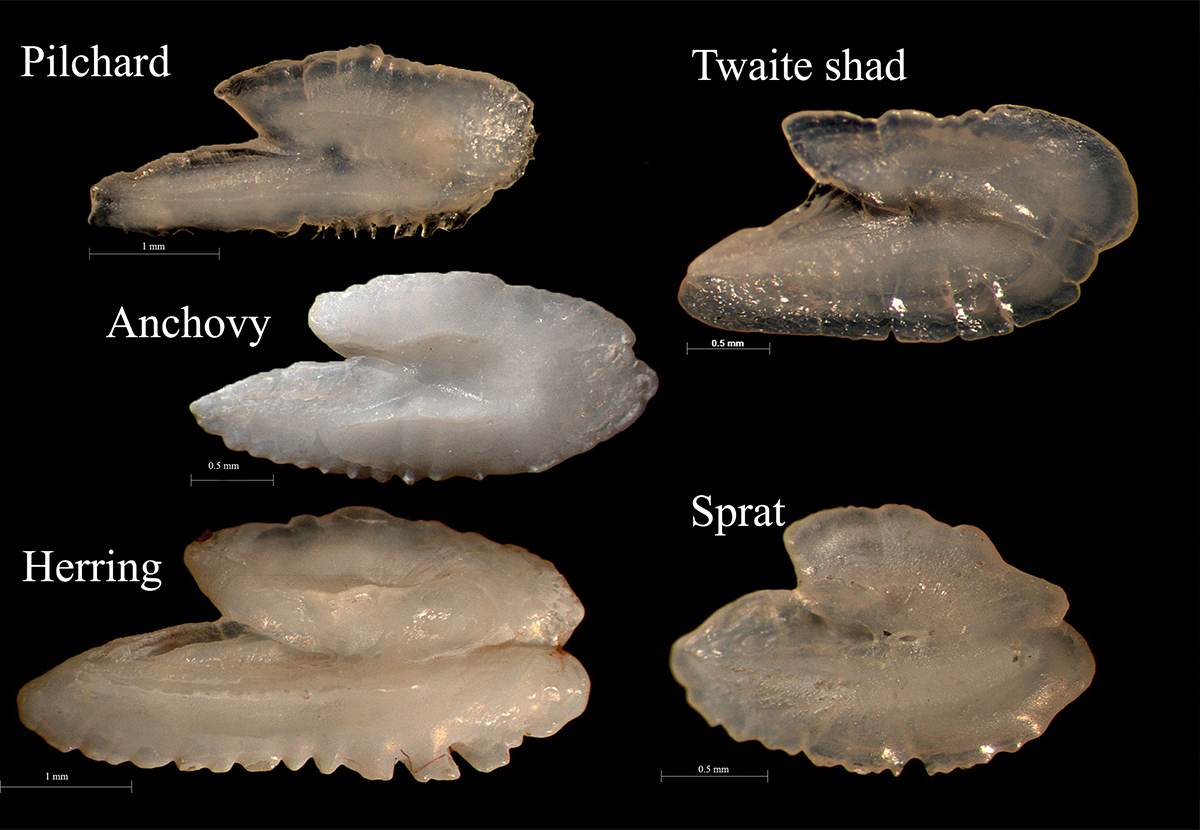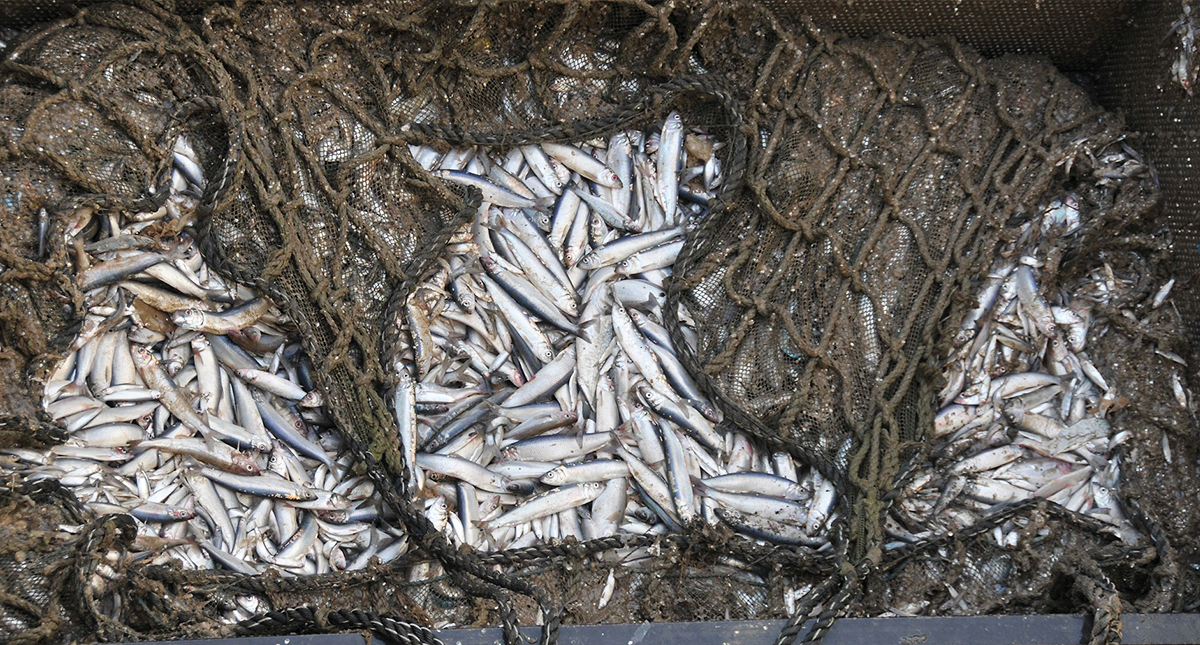Herring
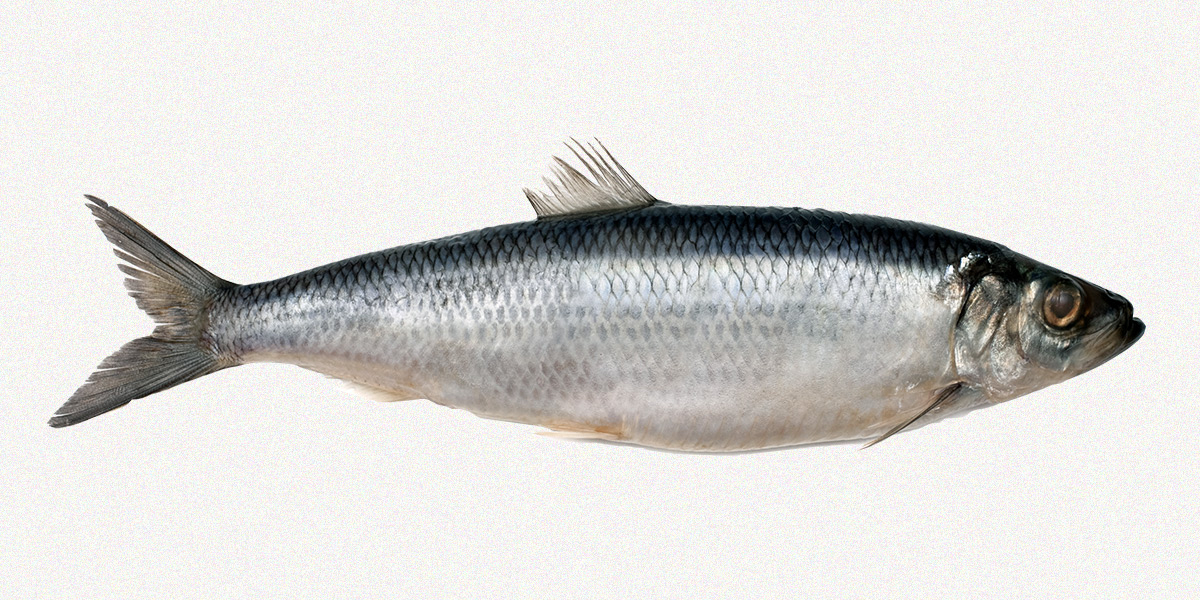
The 'gold of the sea'
Sea maps from the 16th century show fishermen catching herring off the southern point of Texel. The herring was an important fish for the Dutch people. Almost everyone in Amsterdam ate one or two salted, smoked or fried herring every day, as they had for centuries. The fish were caught in the North Sea, the Baltic Sea and closer to home in the Zuiderzee. The Zuiderzee stock spawned at the end of May near Amsterdam and were caught on their way to the spawning grounds.
Various methods were used to catch them. On the south-eastern part of the Island of Texel, beach seines of a few hundred metres long were used, as seen on the Sea Map from 1552 by Jan van Scorel. Later on Texel people used stake nets to catch the ‘gold of the sea’; a ring of nets was constructed with an entrance for the fish. Once the fish were in the 'kom’, they could swim around, keeping them alive and fresh, so the price was a little higher than the battered fish from fykes and beach seines.
Herring disaperared
In 1932 the Enclosure Dam (de afsluitdijk) was built and the Zuiderzee became Lake IJssel; the herring disappeared and the Zuiderzee herring fishery also vanished. The 'kom' fishery also came to an end; the Royal NIOZ is currently the only kom owner, and still fishes with it now and then. It is heavy work and the old saying 'a herring a day keeps the doctor away' still holds for the people who set up the big net and place the heavy poles in the cold water every spring.
